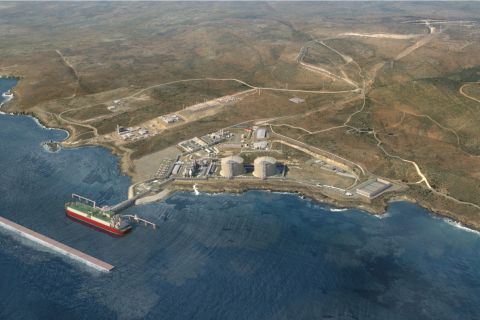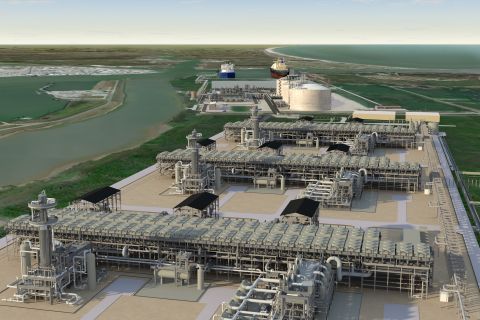As subsea tiebacks become more common, attention is typically drawn to the largest, longest and biggest budget projects employing the latest technologies. Still, companies are working on new technologies that address more marginal wells and save money.
Smaller tiebacks often are overlooked or less publicized due to lower quantities of recoverable hydrocarbons, lack of information released by the operator, smaller budgets or a perceived lack of available technologies for cost-effectiveness. Still, marginal fields can be effectively produced.
Techniques and equipment are now available for improving the development economics while extending the reach and depth of subsea tiebacks. This is especially true in the Gulf of Mexico, where a number of deepwater hubs are already installed and more infrastructure is planned, extending subsea tieback growth to marginal fields, even in deep water.
Many marine service companies are constantly creating new hardware and cost-saving methods that help boost tieback technology. Companies expecting to produce marginal fields look first at estimates of hydrocarbon reserves. Then, operators usually examine flow-assurance issues, initial capital expenditure budgets and potential workover costs as preliminary planning considerations.
Flow-assurance issues complicate the prospect of developing subsea wells with long offsets to the host facility. Couple offset distance with a desire to develop the well in the "fast track" mode, and the risk of obtaining an under-producing well greatly increases, especially if not enough reservoir information is available to properly perform flow-assurance assessment work. Even with the best assessment, some wells will still have issues such as paraffin and hydrate plugging. The longer the offset, the more difficult the paraffin problem, which usually forces the operator into flow-line pigging operations.
The most common method to facilitate subsea flow-line pigging is to use dual flow lines, allowing pigs to travel through a loop. Sometimes though, the necessity for pigging is not well established, and the cost of the second flow line is difficult to justify. In those cases, a dual flow-line system may not be required. Utilizing a subsea pig launcher that can eliminate one of the flow lines could reduce the system's capital expenditure. Various types of subsea pig launchers are available now.
One patented pig launcher system was built and tested for independent deployment and recovery. The launcher is remotely operable and utilizes remotely operated vehicle (ROV) retrievable magazines for replenishment with new pigs. It holds multiple pigs at once, can accommodate varying pig types and can be replenished at any time without the entire pig train being consumed. This allows the operator increased flexibility in choosing a vessel of opportunity to perform a fly-by replenishment operation. This system can accommodate pigs for 2-in. to 10-in. nominal flow lines rated for up to 15,000 psi working pressure.
Another large capital expenditure for long-offset/fast-track marginal wells is control systems. Long offsets generally call for multiplexed (MUX) control systems when the closing times of the critical tree valves become too long for safe operations. In the Gulf of Mexico, the Minerals Management Service (MMS) and federal laws govern closing times for valves, limiting the use of direct hydraulic controls to relatively short offsets. For long offsets, MUX control systems can be a costly addition to the capital expenditure budget, especially for prospects that lie just beyond the reach of direct hydraulic systems and in wells where the function count on the tree and downhole are relatively low.
A lower cost alternative is an electrically piloted hydraulic (EPH) control system. Such a system was designed, produced and successfully installed in 2000. It has performed flawlessly, and other EPH control systems have been produced and installed since. The EPH system provides fast-acting controls for only the necessary functions of the tree and downhole. Not all tree valves need to function within specified time limits, thus the use of a control system that uses electrically operated solenoid valves for specific necessary functions can help operators reduce capital expenditures. The EPH system allows an ROV to recover the pod without using a cable-deployed running/retrieving tool, as is typical for MUX pods. This can help reduce potential workover costs if pod repairs are required. The delivery schedule for an EPH system is typically shorter than a full MUX system.
The cost implications of workover operations can have a large impact on the overall development economics for any subsea well. In a case where only wireline work is required, the costs to perform that work subsea are greatly increased over those of a surface well. This is primarily due to the spread costs of the equipment and vessel needed to do the work. Here again, service companies are working to create solutions that will reduce subsea workover costs.
For wireline work, several service companies are developing subsea systems that can be deployed from the deck of a DP MSV. One system includes a subsea package for interfacing with the subsea tree, a deployment A-frame, workover controls package, circulation riser system and surface equipment. The subsea package is designed with a 4-ram BOP, lubricator riser sections, stuffing box with hydraulic connector, plus all the necessary valves, plumbing, controls and ROV interfaces. It is designed to adapt to various tree vendor running tool packages as well as including an 183/4-in. connector for landing on horizontal trees. An operator used a simplified version of the system to perform two subsea well abandonment jobs in 2002, saving considerable costs when compared to the traditional drilling rig-based abandonments.
Service companies also have explored and designed methods to complete ROV-based tasks. For example, in wells that utilize sliding sleeves to produce from more than one zone, a method has been developed that uses an ROV to interact at the subsea tree to shift the sliding sleeves. Historically, wireline tools shifted sliding sleeves, but more recently, hydraulic sleeves have become a popular choice. The hydraulic versions, however, require some means of supplying and recovering the hydraulic fluids needed to work the valves. The more expensive way of doing this is to use dedicated lines in the production umbilical. The newer method uses ROVs that are properly equipped to engage connections on the tree and work the valves via the ROV system. This technique saves the operator costs for both the umbilical (capital expenditure) and workovers (operational expenditure).
While the focus on subsea technology tends to portray the more expensive and glamorous developments, there are companies working on tools and techniques to address the marginal wells that might otherwise be deemed questionable for development. Several enabling technologies are already developed and are available to assist operators in their quest to profitably produce such wells.
Recommended Reading
Texas LNG Export Plant Signs Additional Offtake Deal With EQT
2024-04-23 - Glenfarne Group LLC's proposed Texas LNG export plant in Brownsville has signed an additional tolling agreement with EQT Corp. to provide natural gas liquefaction services of an additional 1.5 mtpa over 20 years.
Permian Gas Finds Another Way to Asia
2024-04-30 - A crop of Mexican LNG facilities in development will connect U.S. producers to high-demand markets while avoiding the Panama Canal.
Gunvor Group Inks Purchase Agreement with Texas LNG Brownsville
2024-03-19 - The agreement with Texas LNG Brownsville calls for a 20-year free on-board sale and purchase agreement of 0.5 million tonnes per annum of LNG for a Gunvor Group subsidiary.
CoolCo, GAIL Enter Long-term LNG Agreement
2024-05-16 - CoolCo and GAIL’s agreement is intended to secure long-term LNG supply in India’s market, with GAIL having an option to extend the 14-year agreement by another two years.
Segrist: The LNG Pause and a Big, Dumb Question
2024-04-25 - In trying to understand the White House’s decision to pause LNG export permits and wondering if it’s just a red herring, one big, dumb question must be asked.




